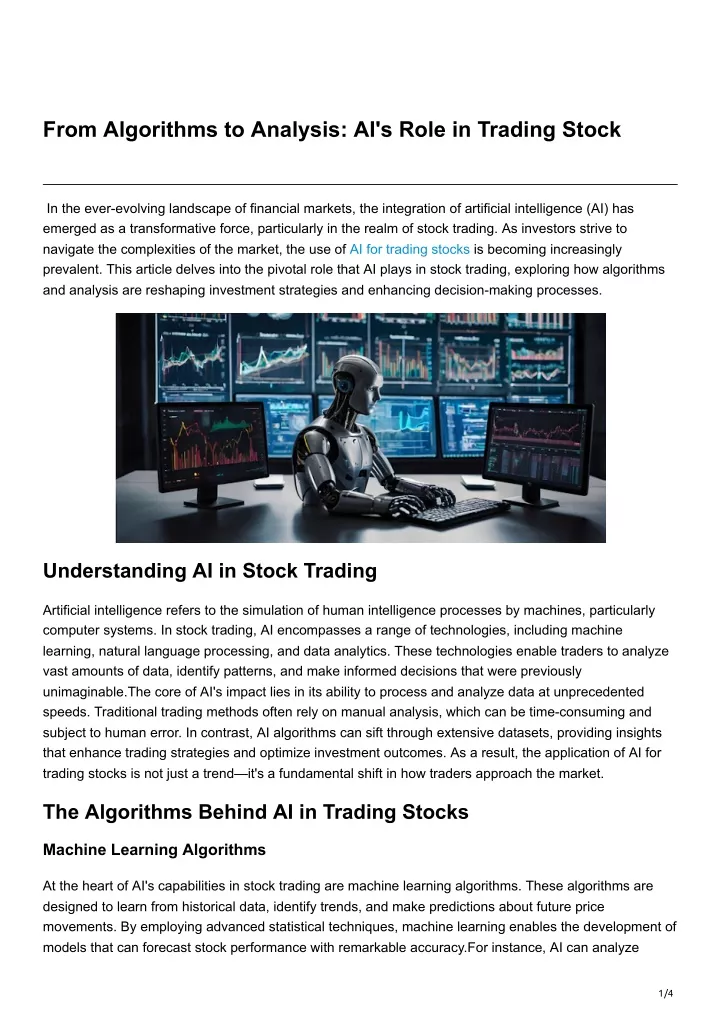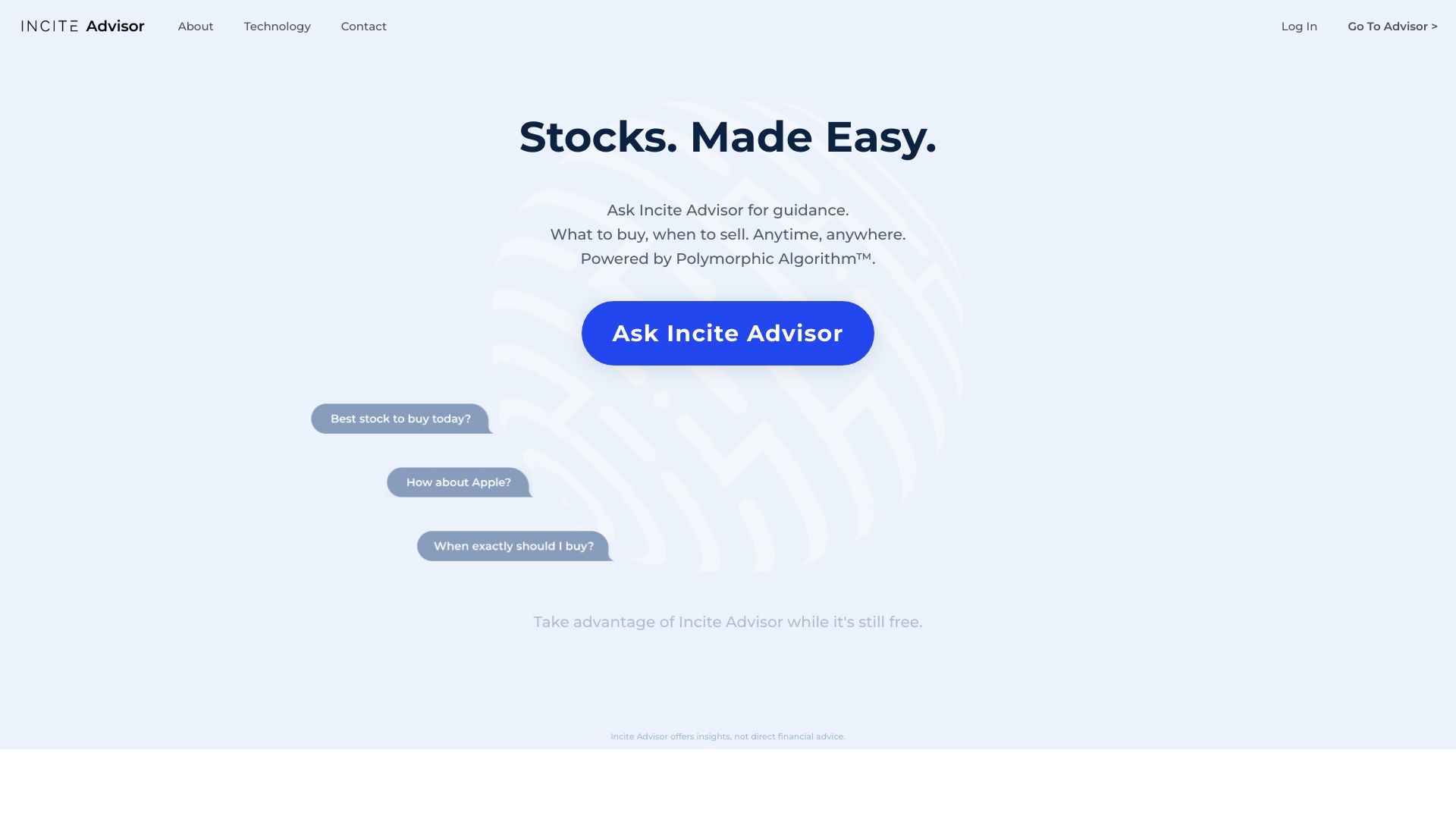It is vital to know that AI trading platforms that incorporate predictive analysis of stocks are able to offer users the ability to customize their platform to meet their trading objectives as well as their risk tolerances and market conditions. Platforms that have powerful customization capabilities can boost your trading efficiency. Here are 10 top tips to help you evaluate the platform's ability to customize your strategy:
1. Evaluate Pre-Built Strategy Templates
Varieties of Templates: Find out whether the platform you are using offers pre-built templates for various types of trading (e.g. Day Trading and Swing Trading, as well as Long-Term Investing).
Utilizability: Find out how easily these templates can be altered to meet your needs.
Performance history: Find out if the platform offers historical performance data on pre-built strategy.
2. Create a custom strategy
Drag-and-drop tools: Select platforms with drag-and-drop interfaces that permit you to quickly create custom strategies.
Coding options: Determine whether the platform allows custom-made programming (e.g., Python, R, or proprietary scripting languages) for advanced users.
Flexibility. You must define the key elements like the parameters for risk management, entry and exit regulations, and other components that comprise your plan.
3. Check for Backtesting Capabilities
Historical data: Check whether your platform has sufficient historical data to allow backtesting strategies.
Modifiable parameter: Make sure that you are able to alter parameters while backtesting (e.g. indicators, timeframes).
Performance metrics: Ensure that the platform provides detailed metrics of performance (e.g. Win rate, Sharpe Ratio, Drawdown) in the back-testing of strategies.
4. Evaluate Real-Time Strategy Testing
Paper trading Strategies can be tested in real-time with simulation or paper trading.
Live testing: See whether you can test strategies on live markets using very little capital to test their effectiveness.
Real-time adjustments: Examine to find out if your plan can be adjusted in real-time according to the market conditions.
5. Examine the degree of integration using technological indicators
Indicator library - See if a platform provides an extensive collection of indicators that are technical, like moving averages (e.g. RSI), MACD, or RSI.
Custom indicators - Ensure that you are able to make or import your own custom indicators.
Indicator combinations: Verify if the platform allows combining multiple indicators for more complex strategies.
6. Check for Risk Management Tools
Stop-loss/take-profit: Ensure the platform allows you to set stop-loss and take-profit levels within your strategies.
Position sizing. Verify whether you have established rules for how to manage the risk (e.g. set amount or percentage of your portfolio).
Risk-reward ratio: Check whether the platform can set risk-reward ratios for specific strategies or trades.
7. Evaluate Multi-Asset Strategy Support
Asset classes: Make sure that the platform is able to provide strategies for a variety of asset classes (e.g. stocks, ETFs or options or forex).
Strategies for cross-assets: Determine whether you're able to create strategies that incorporate various asset classes.
Market coverage: Make sure the platform is covering the markets in which you're in (e.g. US and international markets and copyright, etc.).
8. Assess Automation & Execution
Automated Trading: Make sure that the platform can execute strategies automatically using pre-defined rules.
Order types: Verify that the platform is able to execute various types of orders, such as stop, limit and market.
Latency - Verify the ability of the platform to execute trades promptly particularly when you are using high frequency strategies.
9. Take a look at the Strategy Optimization Tools
Optimizing parameters: Make sure that the platform offers tools for optimizing strategy parameters (e.g. grid search and genetic algorithms).
Machine learning integration: Check if the platform integrates machine learning to refine and improve strategies.
Scenario Analysis: Determine if the platform supports testing strategies across different market scenarios (e.g. bull bear, bear or volatile).
Review User Comments
User feedback: Utilize user reviews to determine the efficiency of the platform to tailor strategies.
Community forums. Find out if the users are able to share information and discuss their ideas in a vibrant community.
Support resources: Make sure that the platform has tutorials, documentation, as well as webinars that will help users create and optimizing strategies.
Bonus Tips
Trial period: Experience the customisation capabilities of the platform with a free demo or trial.
Scalability is crucial. The platform must be able to handle strategies that get more complicated as your trading grows.
Customer support: Check whether the platform is able to provide assistance with strategy-related issues or questions.
If you follow these guidelines, you can assess the capability of AI software to predict and analyze stocks on a trading platform in order to modify strategy. This will allow you to select a trading platform that is aligned with your goals in trading and lets you apply and improve strategies. Platforms that have strong capabilities for customization will allow you to adapt to market changes, and boost the performance of your trading. Read the top rated options ai tips for website tips including incite, stock ai, ai for stock trading, best ai for trading, trading with ai, AI stock trading app, chatgpt copyright, ai investing app, ai investing platform, chatgpt copyright and more.

Top 10 Ways To Evaluate The Transparency Of AI stock Trading Platforms
Transparency should be considered when considering AI platforms for prediction and trading in stocks. Transparency is important as it enables users to be confident in the platform, comprehend the decisions made and verify the accuracy. Here are the top 10 methods to assess the degree of transparency in these platforms.
1. The AI Models Explained in Clear Terms
TIP: Make sure the platform provides a thorough explanation of the AI and algorithmic models that are that are used to predict the future.
The reason: Understanding the basic technology helps users assess its reliability and limitations.
2. Disclosure of Data Sources
Tips: Find out if the platform is able to disclose the data sources it uses (e.g. historic stock data, social media).
Why: Knowing the data sources ensures the platform has reliable and comprehensive information.
3. Performance Metrics and Backtesting Results
Tips: Search for transparent disclosure of performance indicators (e.g., accuracy rates, ROI) and backtesting results.
What is the reason? It allows users to check the performance of their platform in the past and also to verify the effectiveness of their platform.
4. Real-time updates and notifications
Tips: Check if the platform provides real-time updates and notifications about trading, predictions or system modifications.
The reason is that real-time transparency provides users with constant information about critical actions.
5. Limitations - Communication that is open
Tip: See if your platform clarifies the limitations and potential risks of the trading strategies it employs and its predictions.
The reason: Recognizing your weaknesses can build trust with your customers and allow them to make educated decisions.
6. Users are able to access raw data
Tip: Determine whether the AI model can be used to access raw data, intermediate results or both.
Why? Users can do their own analysis and verify their predictions using the data in its raw form.
7. Transparency on charges and fees
Make sure you read the terms and conditions on the platform you are considering.
Transparency in pricing is a great thing. It prevents unanticipated costs and boosts confidence.
8. Regular reporting and audits
Find out if your platform is regularly audited by third parties or whether it has reports on its performance.
Independent verification increases credibility and accountability
9. Predictions that can be explained
Tip: Check if the platform offers information about how predictions or recommendations (e.g. the importance of features or decision tree) are generated.
Why? Explainability allows users to understand the logic behind AI-driven actions.
10. User Feedback Channels and Support
Tips: Find out if there are open channels of communication that allow users to give feedback and get support. Also, determine whether the company is transparent in the way it responds to issues expressed by users.
Why? Responsive communication shows a commitment for openness and the satisfaction of users.
Bonus Tip – Regulatory Compliance
Make sure that the platform is in compliance with all applicable financial regulations. This will add another layer of credibility to the platform.
By assessing these functions, you can decide if the AI trading platform or predictions of stocks are reliable. It will then be able make educated decisions and have confidence in its capabilities. Check out the most popular click this link on best AI stocks for more advice including AI stock analysis, invest ai, best stock prediction website, ai copyright signals, chart analysis ai, ai software stocks, ai software stocks, AI stock predictions, AI stock prediction, best ai penny stocks and more.
